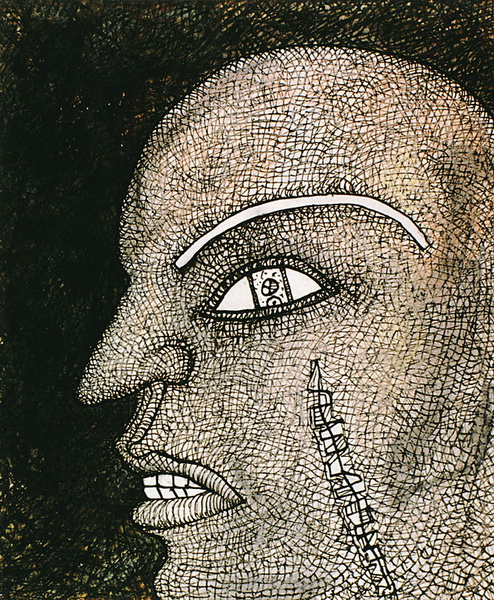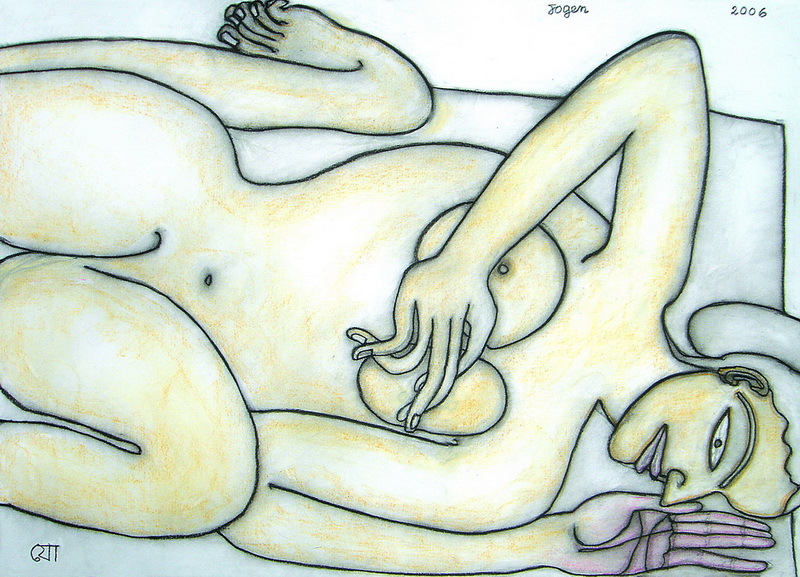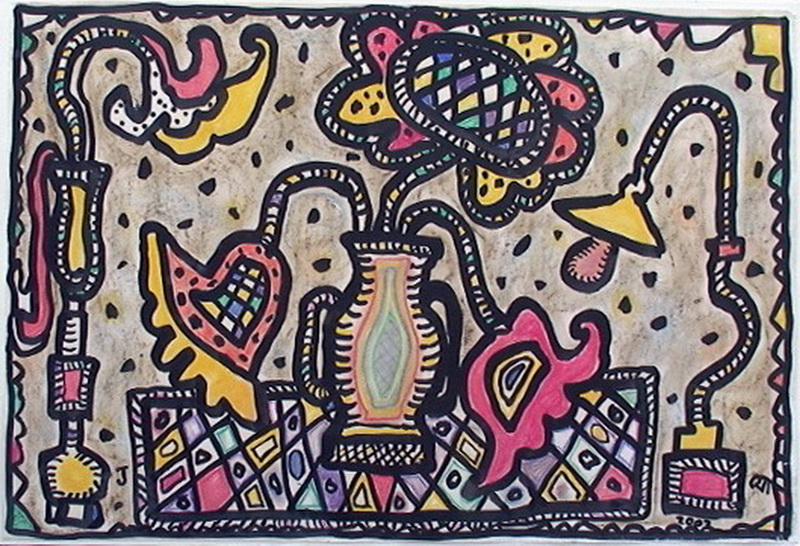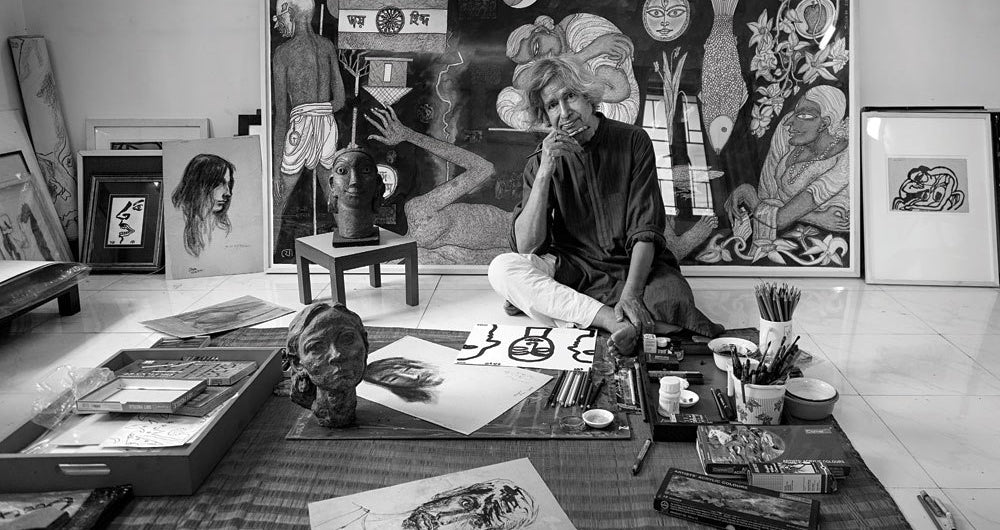Jogen Chowdhury is an eminent Indian artist considered one of the most important and seminal figures in the history of postcolonial Indian Art. Jogen knows his painting bonded to Partition, the landscape, folk tales, and figurative and political injustice-motivated compositions. He was born and brought up in an ambience of Partition, exist it his post-Partition days in Calcutta or his time of study in Paris, Chowdhury recognises that his settings have always charmed him; Jogen’s canvas was always filled with agony felt by the artists in his life, sorrowful migration.
Jogen Chowdhury (born 19 February 1939) left India for France to join École nationale supérieure des Beaux-Arts in 1967 and came back to India full of ideas and individual style. Jogen’s body of work is mainly in ink, watercolour and pastel, and he stands alone in modern Indian Art with his unique style and form, which he created in these mediums. His enigmatic vision merges with his natural sense of shapes and starts to define the Odyssey of masterpieces.

The significance of Jogen Chowdhury connects with India’s independence and cultural formations, as curator and poet Ranjit Hoskote commented. Our nation slowly grows from crises, anxieties, hopes and dreams. Jogon Chowdhury’s body of works spans diverse phases of the artist’s work, spanning several media, including oils, watercolour, graphite and charcoal drawings, lithographs, pastels, mixed media work, and book illustrations. His orbit of fantasy flourished with the French School of Art practice, which helped him portray the figures and landscapes freely. He richly used to paint and mix ink with pastels that helped him explore the soft curves and angularities of contorted bodies.
Jogen Chowdhury was fond of social problems that fetched him into an unknown land of art practice. Art is always high in content than technique. That thought process Jogen brings into Indian reality after the Parisian life. Jogen always talks about the attachment to India. The road never ends in Paris school but starts a new turn in India into figurative, distorted or exaggerated lines to drive the message home. Jogen gives human beings a better life in his Art. The ironic presence of their sorrowful life is a style and process. Artists often use muddy colours on a splendid canvas to depict nature and human figures. Jogen used human figures in a purely aesthetical sense.

Indian mythical and folk tales create an undertone of Jogen’s work of Art. Jogen’s art practice sometimes consciously merges with Indian spiritual entities. The figures of God and Goddess often come to his canvas. ‘Erotica is another important undercurrent in Jogen’s work. One of his mixed media drawings, which resembled a large, dangling Phallus, drew much attention. This, the artist explained, was only a rolled bedding on his terrace. However, he doesn’t deny that the ‘sensuousness’ was intentional. Serpents and fish often appear in his work, recalling the rudder-intended shapes of his dreams. Breasts seem a less engaging obsession. Far from luscious and fruit-like, they appear squashed and lifeless, as in the ‘Tiger in the Moonlight painting, writes Aman Nath.
We can understand the visual narratives and stories that bring the idea of India in a broad sense. India echoed in Jogen’s artworks; his tempestuous works are more extravagant and let us into a peaceful memory of wild animals, and how they portray the nation’s life is disturbing and astonishing. He grounded into the regional Bengali identity and did the works; hence, we can take Jogen’s works as a social critique and satirical.

‘The word organic often features in Jogen’s vocabulary. Whether he is talking about nature and its proliferation, pictorial forms as being organically conceived, or the human body as an elaborate organism in continuity with nature. He was spoken in a didactic mode. At the end of the long narrative, Jogen offers irrepressible evidence about an artist’s culturally honed integrity. However, one can surmise that he is not hostile to Western modernism’; Geeta Kapur writes about Jogen’s work.
Jogen never away from the societal settings, and his work of Art happened inside the social environment of Bengali and Indian contexts. The choice of interest comes through different cultural stages and labyrinths; his language is more natural than nature in his Artworks.

Krispin Joseph PX, a poet and journalist, completed an MFA in art history and visual studies at the University of Hyderabad.





